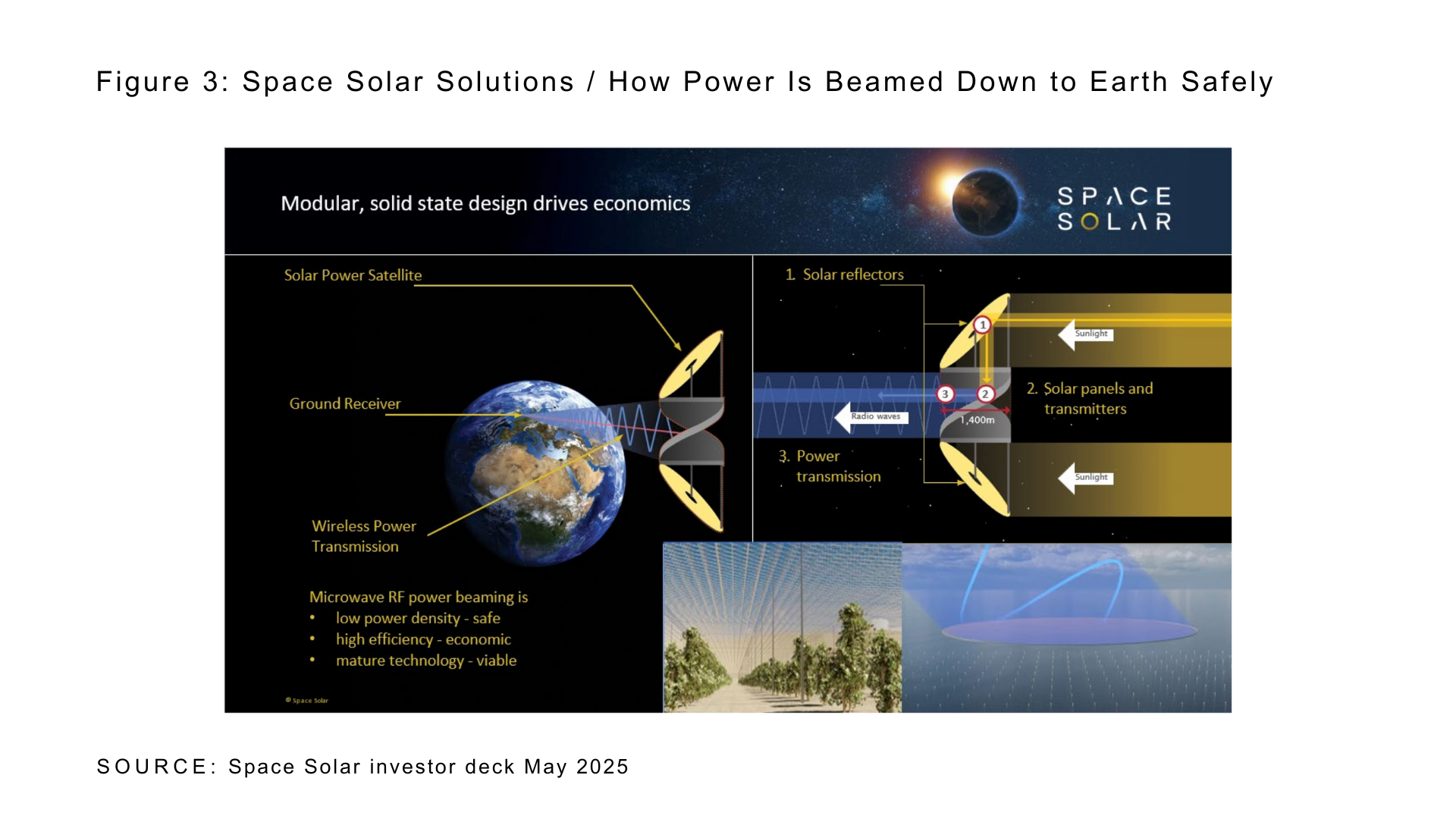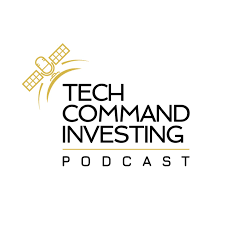Space Solar Solutions: How Power Is Beamed Down to Earth Safely
This diagram from Space Solar’s investor deck (May 2025) illustrates how orbital solar satellites collect sunlight, convert it to radio-frequency energy, and beam it safely to ground receivers. The modular, solid-state architecture of the Cassiopeia system enables scalable, high-efficiency, and secure power transmission forming the backbone of future space-based energy infrastructure.

What if your energy came from space?
Not in 2070. Not in sci-fi. But this decade.
In this episode of Tech Command Investing, host Alain Gavin sits down with Sam Adlen, Co-Founder of Space Solar, to explore how clean, continuous power from orbit could transform global energy, defense, and sovereignty.
What emerges is a radical shift in how nations think about infrastructure: solar power stations in space, capable of beaming 24/7 renewable energy to Earth — providing energy security without borders.
Key Takeaways
Orbital Power Stations as Sovereign Infrastructure
From China and Japan to the UK and US, governments are racing to deploy kilometer-scale space solar arrays that can beam energy across continents or directly to forward bases. What once was science fiction is now a strategic reality.
AI Will Drive an Energy Crisis
AI’s exponential computing demand could soon consume up to 99% of U.S. electricity, according to Eric Schmidt. Space-based solar offers continuous, carbon-free power, overcoming the intermittency limits of wind and ground solar.
Redefining Energy Economics
No more overbuilt grids or massive battery fields — space solar delivers baseload power day and night, lowering grid upgrade costs and enabling energy exchange between nations.
A Strategic Advantage
Power is deterrence. Beaming energy directly to drones, satellites, or deployed units eliminates the need for vulnerable fuel convoys and gives militaries true energy autonomy.
The Investor’s Opportunity
Space Solar’s Cassiopeia system uses modular, mass-manufactured components and leverages Starship-scale launch economics. With early demonstrations complete and multi-government interest building, the company represents a once-in-a-generation dual-use investment opportunity.
Why It Matters
As terrestrial grids strain under rising AI workloads and geopolitical risk, space-based solar power could become the next GPS or Internet, a foundational system shaping how societies, economies, and militaries operate in the 21st century.

🎧 Listen now:
[Amazon Music] | [Spotify] | [Apple Podcasts] | [YouTube] | [Audible]


